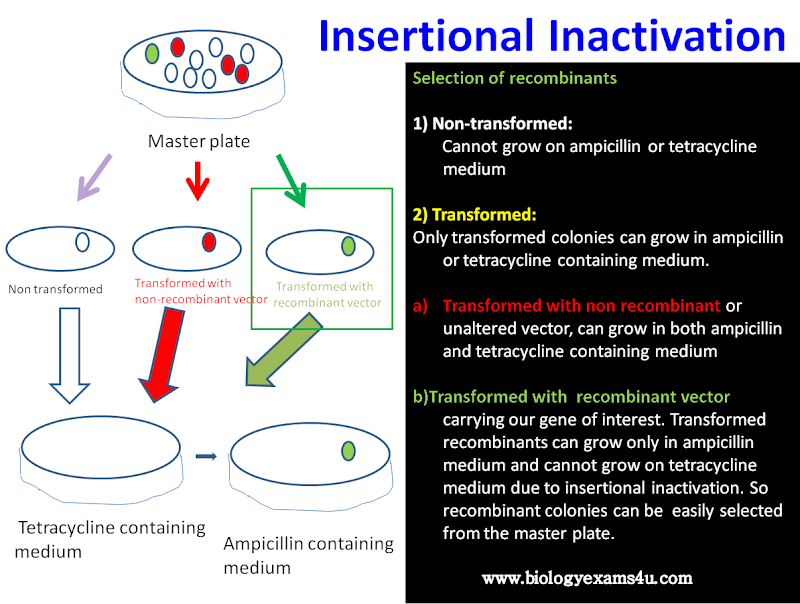Insertional inactivation is a technique used in recombinant DNA technology and involves inactivation of a gene by inserting a fragment of DNA into the middle of its coding sequence. Any future products from the inactivated gene will not work because of the extra codes added to it.

An example is the use of pBR322, which has genes that encodes polypeptides which confer resistance to ampicillin and tetracycline antibiotics. In the given example, we have inserted our gene of interest in the tetracycline gene coding region. So that, tetracycline resistance gene is no more functional. This process is called insertional inactivation. This process helps in the selection of recombinant colonies. Recombinant colonies with desired gene inserted at tetracycline coding region can grow only in ampicillin containing medium, where as transformed colonies with unaltered vector can grow in both tetracycline and ampicillin medium. We can select the recombinant colonies by comparing with the master plate. See the above figure for better understanding.
Enroll Now - Understand
the basics of rDNA technology in 2 hours

Very helpful Sir. Thank you
ReplyDelete